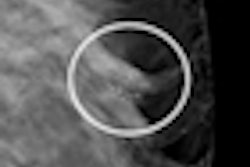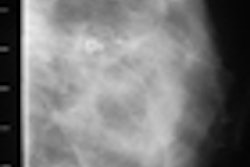Recall and cancer detection rates increase for at least two years after a facility transitions from analog to digital screening mammography, according to a new study published online July 25 in Radiology.
However, the researchers from Washington University School of Medicine in St. Louis also found that positive predictive value after biopsy decreases, particularly in women with microcalcifications.
The study team examined the effect of transitioning from film-screen mammography to digital screening mammography on recall rate, cancer detection rate, and positive predictive value (Radiology, July 25, 2011).
Lead author Catherine Glynn and colleagues obtained practice audit data for three breast imaging radiologists from 2004 to 2009. These data were sorted by time period into the following groups:
- Baseline (2004 to 2005)
- Digital year 1 (2007)
- Digital year 2 (2008)
- Digital year 3 (2009)
The institution converted from an analog mammography screening program to a full-field digital mammography screening program in 2006. All patients included in the study underwent imaging exclusively with a digital system (Selenia Dimensions and Selenia Base units, Hologic); computer-aided detection software also was used.
The team found that the three radiologists interpreted 32,600 film-screen mammograms and 33,879 digital mammograms over the time period. Recall rates increased from 6% at the baseline year (2004 to 2005) to 7% in digital year 1, and continued to increase in subsequent years to 9%. The percentage of recalls for calcifications increased from 14% at baseline to a peak of 24% in digital year 1 and 18% in digital year 2.
"Given that digital imaging is more sensitive than [film-screen] mammography in the identification of microcalcifications, it is not surprising that there is a greater number of recalls for microcalcifications," Glynn and colleagues wrote.
The cancer detection rate increased from 3.3 at baseline to 5.3 in digital year 1, and remained higher in subsequent years. Positive predictive value (PPV) after screening mammography increased from 6% at baseline to 8% in digital year 1 and returned to baseline levels in digital year 3. In contrast, PPV after biopsy decreased from 45% at baseline to 30% in digital year 3.
The study findings can help other facilities make the film-screen mammography versus digital screening mammography decision, according to the authors.
"[Our data can help] radiologists better understand the potential pros and cons of converting to digital mammography in respect to patient outcomes, including cancer detection rate, recall rate, and positive predictive value," they wrote.



















